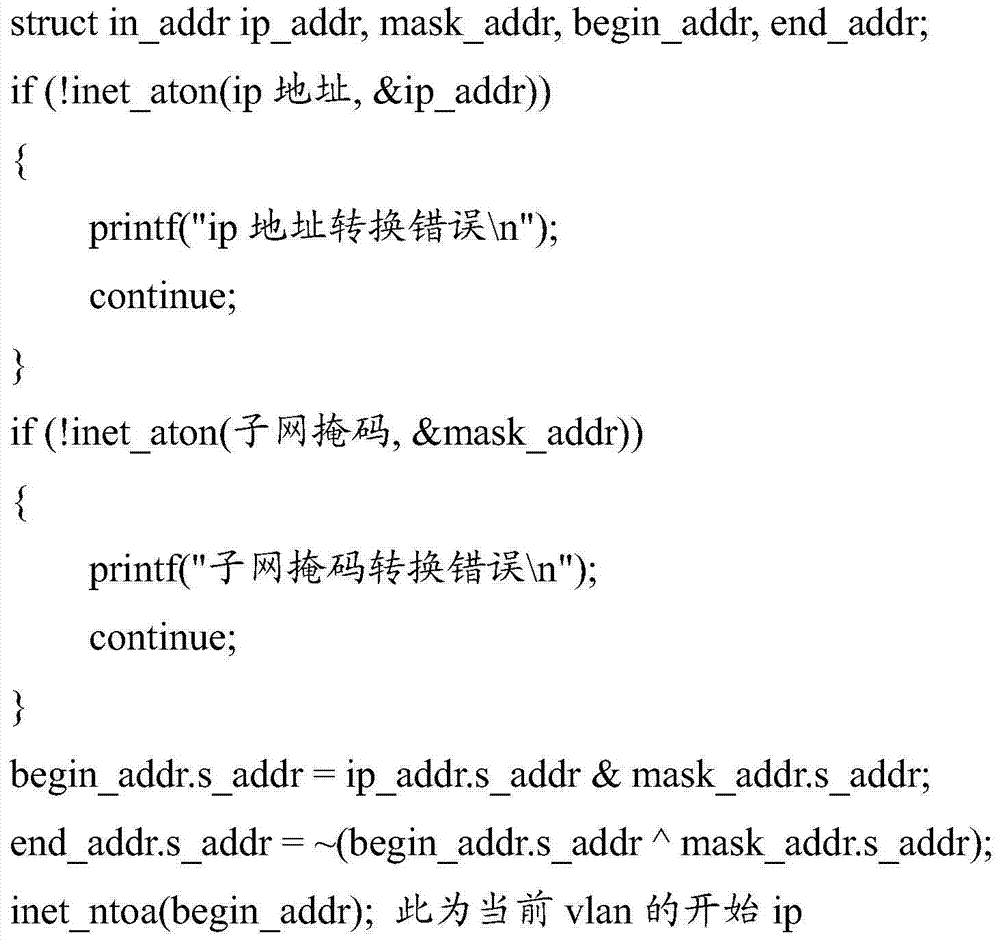Method and system for initiatively detecting IP (Internet protocol) of switch
A technology of active detection and switching, applied in the computer field, to achieve good technical effects, good complex network environment, efficient and stable information acquisition
- Summary
- Abstract
- Description
- Claims
- Application Information
AI Technical Summary
Problems solved by technology
Method used
Image
Examples
Embodiment 1
[0038] The Telnet protocol is a member of the TCP / IP protocol family, and it is the standard protocol and main method of Internet remote login service.
[0039] The main solution of this solution is to request the switch remotely through the local server in a complex network environment, and the switch actively detects all the IPs of the local port to update the arp cache on the switch, so as to obtain the IP and mac connected to the port only through the SNMP of the switch information. This solution can better adapt to the complex network environment of customers, and obtain information more efficiently and stably.
[0040] Specifically, as figure 1 As shown, a method for a switch to actively detect IP includes:
[0041] The local server is connected with the remote switch, and the server obtains the information of each VLAN on the switch through the SNMP protocol, and the information of the VLAN includes the ip address used by each vlan and the used subnet mask information...
Embodiment 2
[0047] Embodiment 1 is supplemented in detail.
[0048] Log in to the switch through the TELNET protocol, specifically including: enable multi-threading, and log in to the switch using the telnet protocol at the same time.
[0049] Further, preferably, the server sends the ping request to the switch with the send command through the socket interface;
[0050]The server then sends a request to the switch through the snmp interface, and obtains the mac and the ip information corresponding to the mac of each port on the switch in turn.
[0051] Further, preferably, use the switch's own ping command to actively detect all ip addresses of the local port, and update the arp cache on the switch.
[0052] The key point of this solution is to first obtain the information of each VLAN on the switch through the SNMP protocol, keep alive the ip and mask, and then calculate the network segment of each VLAN through the ip and mask, then log in to the switch through the TELNET protocol, and...
Embodiment 3
[0054] Such as figure 1 Shown is a schematic flow diagram of a complete embodiment, which specifically includes:
[0055] 1. The server obtains the vlan information on the switch, and the ip and mask of the vlan through the SNMP api.
[0056] 2. Calculate the network segment used by each vlan through the ip and mask of the vlan.
[0057] 3. Through multi-threading, open 4 threads and use the telnet protocol to log in to the switch and pass the authentication.
[0058] 4. Send the ping request to the switch through the send command of the socket, and the switch will execute the received commands in sequence.
[0059] 5. After the switch has pinged all IPs, the local arp cache has been updated to the latest.
[0060] 6. The server obtains the mac and mac-corresponding ip information of each port on the switch through the snmp api. What is obtained at this time is the final result, and there is no need to complete the information through active detection.
[0061] Among them,...
PUM
 Login to View More
Login to View More Abstract
Description
Claims
Application Information
 Login to View More
Login to View More - R&D
- Intellectual Property
- Life Sciences
- Materials
- Tech Scout
- Unparalleled Data Quality
- Higher Quality Content
- 60% Fewer Hallucinations
Browse by: Latest US Patents, China's latest patents, Technical Efficacy Thesaurus, Application Domain, Technology Topic, Popular Technical Reports.
© 2025 PatSnap. All rights reserved.Legal|Privacy policy|Modern Slavery Act Transparency Statement|Sitemap|About US| Contact US: help@patsnap.com



